「丹生島」と呼ばれた島の全体が城そのものでした。
The whole of an island called “Niu Island” was the castle itself.
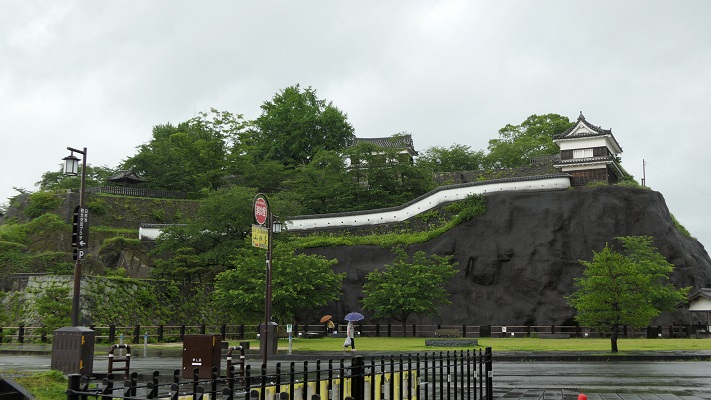
立地と歴史~Location and History
臼杵城は、もともと「丹生島城」と呼ばれていて、こちらの方が歴史ファンにはなじみがあるかもしれません。なぜならここは戦国時代に大友氏と島津氏の間で起こった有名な「丹生島城の戦い」の舞台となったからです。大友氏は北部九州地方において6箇国を領有し、その本拠地は豊後国の府内、現在の大分市にありました。
Usuki Castle was originally called “Niu Island Castle” which is rather popular among history fans. Because there was a famous battle between the Otomo and Shimadu clans called “the Battle of Niu Island Castle” in the Warring States Period, Otomo clan had their territory of six provinces in the north part of Kyushu region, whose home base was in Funai of Bungo Province, now called Oita City.
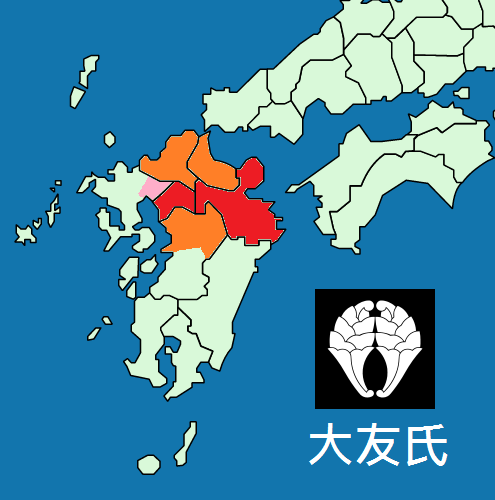
大友宗麟は、1561年に毛利氏との戦いに敗れた後、より防御力の強い拠点を作る必要を感じました。宗麟は、臼杵湾にある岩でできた丹生島に新しい本拠地を作る決断をします。この島は約4kmの外周があり、海面から15mの切り立った岩崖がありました。更には、この城は引き潮のときは砂浜経由で行き来できましたが、満ち潮のときは完全に陸地から離れていました。もし戦いが起こった場合、十分な兵糧か水軍による補給があれば、長期間の籠城が可能となっていました。
Sorin Otomo found his clan in need of building a more defensive site after they were beaten by the Mori clan in 1561. He decided to build their new base castle on the rocky Niu Island in the Usuki Bay. The island was about 4 km surroundings in length, and 15m height from sea surface with vertical rock cliffs. In addition, the castle was accessible through the sandy beach at low tide, or completely isolated from land at high tide. If a battle happened, it could persevere for a long time with enough supply of its own or from the Navy.
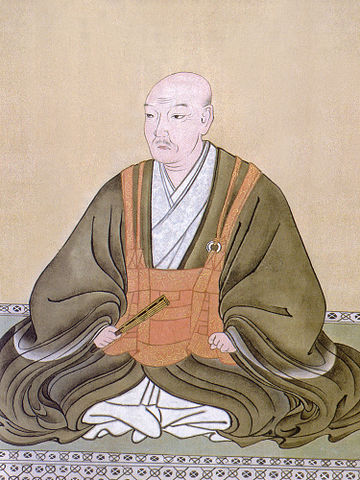

この想定は1586年に南九州から島津氏が大友氏の領地に侵攻したときに現実となりました。宗麟は、天下人の豊臣秀吉に救援を求めましたが、島津氏は秀吉からの援軍が到着する前に全九州地方を征服しようとしました。島津の軍勢はこの城を取り囲み、大友は運命は風前の灯のようでした。そのとき、大友方の最終兵器として「国崩し」との異名を持ち、ポルトガルから輸入されたフランキ砲が火を噴き、島津を駆逐したと言われています。大友は滅亡を免れました。島津は城の攻略をあきらめて撤退し、最後は秀吉に降伏をしました。大友もまた苦難を避けられず、宗麟の子息、義統は後に秀吉により改易されました。
The assumption came true when Shimadu clan’s invasion from the south Kyushu assaulted Otomo’s territory in 1586. Sorin asked the ruler Hideyoshi Toyotomi for help, but Shimadu tried to conquer all of Kyushu region before the reinforcements from Toyotomi arrived. Shimadu’s troops surrounded the castle while Otomo was like a candle flickering in the wind. However, it is said that Otomo’s ultimate weapon, Breech-loading swivel gun imported from Portugal, nicknamed “Destroyer of nations”, eliminated Simadu before Otomo escaped death. Shimadu gave up to capture the castle, withdrew, and surrendered to Toyotomi in the end. Otomo were also not without trouble, because Sorin’s son, Yoshimune was fired later by Toyotomi.
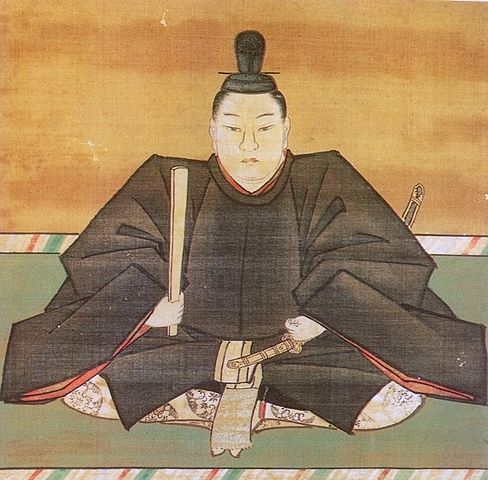
江戸時代には、この城は臼杵藩の所有となり、主に「臼杵城」と呼ばれるようになりました。城の範囲は島の外に広がり、便益のために「大手門」や「三の丸」が設置されました。
In the Edo Period, the castle was in the Usuki Domain, mainly called “Usuki Castle”. Its range spread outside the island setting the main gate “Otemon” and the third enclosure “Sannomaru” for convenience.
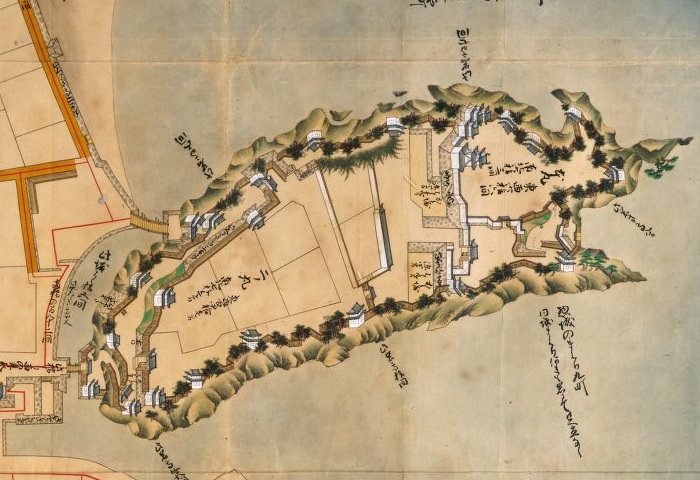
特徴~Features
臼杵城は「臼杵公園」となっています。公園は今では完全に陸地の一部になっていますが、以前は島だったというのがその形からわかります。なぜなら今では島の代わりに岩山のように見えるからです。
The ruins of Usuki Castle has become “the Usuki Park”. The park is now completely part of land, but you can see the shape of the former island. Because it looks like a rocky hill instead of an island.
城周辺の航空写真~The aerial photo around the castle
最初は正面口である「古橋口」から登ってみましょう。この入り口は大友時代から存在し、二の丸に通じています。この城は部分的に石垣に覆われ、2つの現存櫓といくつか復元建築物もあるのですが、元は江戸時代に作られたものです。
You can first climb up narrow stairs from the front entrance called “Furuhashi-Guchi”, which has existed from Otomo era, to the second enclosure “Ninomaru”. The castle has been partly covered with stone walls, and had two remaining turrets and some recently restored buildings. Their origin goes back to the Edo Period.
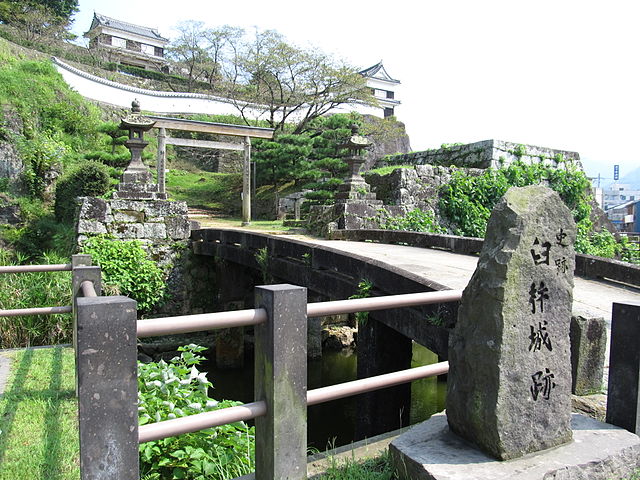
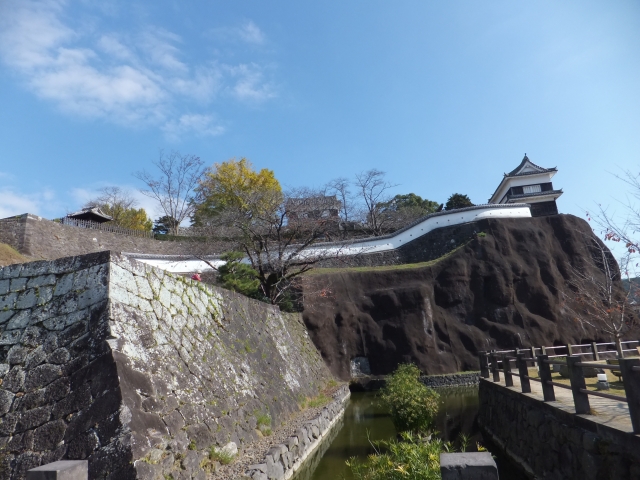
二の丸はこの島の一番高いところにあり、領主のための館が城の歴史の最初と後半の時期に設けられました。ここにはフランキ砲のレプリカがあります。また余談ですが、丹生島城の戦いで使われた本物の大砲は、東京の靖国神社にある遊就館に展示されています。
Ninomaru was the highest point of the island where the halls for the masters were in the first and the last of the castle’s life. You can see the replica of a breech-loading swivel gun at this spot. In addition, you can also see the genuine gun which was used in the Battle of Niu Island Castle in the Yushukan Museum of Yasukuni Shrine, Tokyo.
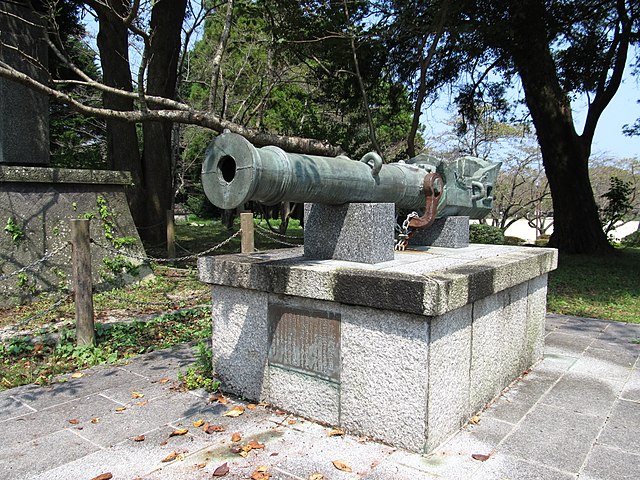
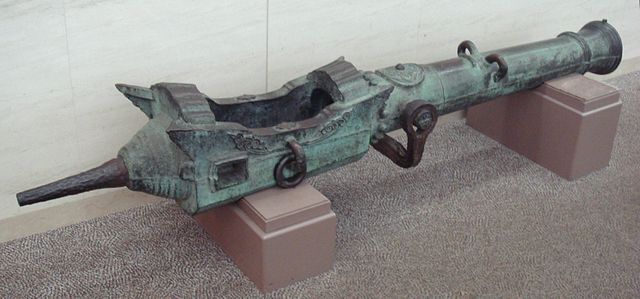
島の後ろ側には本丸があり、江戸初期に天守が建築されました。ここは一時期城の中心地とされたのですが、長くは使われませんでした。恐らく二の丸より低く狭かったからでしょう。「卯寅口」と呼ばれる通用口は、本丸から下って船着き場に通じており、非常時を考え作られました。その外側は今は海ではないですが、この出入口にはまだ船着き場の雰囲気が残っています。
The back side of the island was the main enclosure “Honmaru” where the Tenshu keep was built in the early Edo Period. This place was once set as the center of the castle, but it wasn’t used for long, perhaps because of being lower and smaller than Ninomaru. The back entrance called “Uto-no-Kuchi” goes down from Honmaru to the port for emergency. Though outside is now not the sea, the entrance still has an atmosphere of a port.
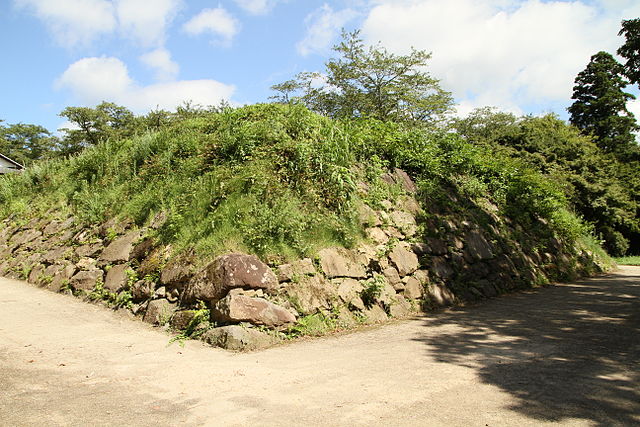
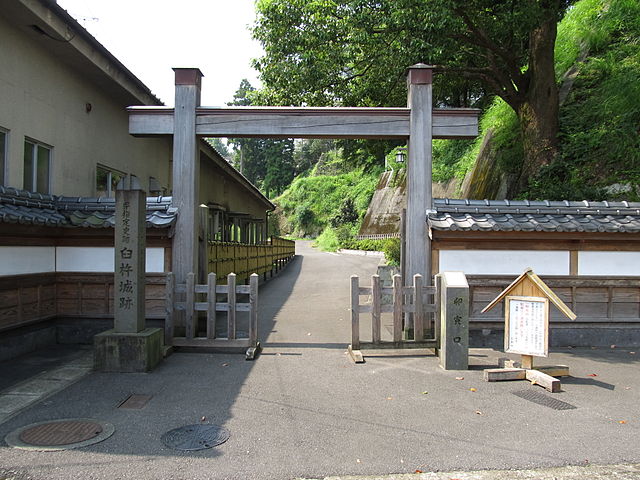
その後~Later Life
明治維新後、この城は公園となりました。天守や他の多くの櫓は廃材として売られるか、自然に崩壊しました。公園は有名になりましたが、桜の名所としてであって史跡としてではありませんでした。例を挙げると、天守台の高石垣が残っていたのですが、景観上の理由で削られてしまいました。最終的には1966年に城跡が県の史跡として指定されました。最近には2001年に「大門櫓」という櫓門が木造で復元されました。
After the Meiji Restoration, the castle was turned into a park. The Tenshu keep and many other turrets were sold as waste materials, or collapsed naturally. The park became famous for cherry blossoms, but not for being a historic site. For example, the remaining high stone walls for Tenshu was filed for landscape. Lastly, the ruins were designated as a prefectural historic site in 1966. Recently, a turret gate called “Daimon-Yagura” was restored in wooden style in 2001.
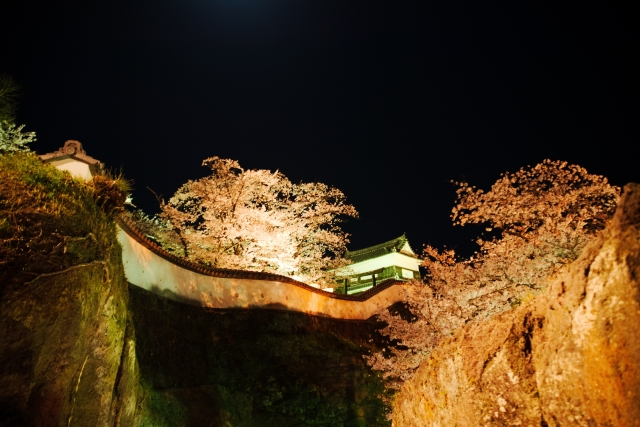
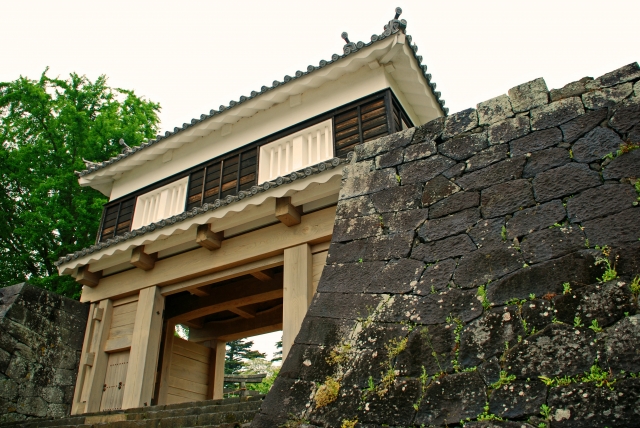
私の感想~My Impression
臼杵城周辺の地域は、城と同じように岩山に囲まれ、石垣を使った建物も見られます。市街地も見て回られてはいかがでしょうか。また臼杵市は、「臼杵石仏」でも有名です。市街地から約5km離れた所にあります。
The area around Usuki Castle is surrounded by rocky hills and some buildings there use stone walls like the castle. Why not get around the city area as well. Uski City is also famous for “Uski Stone Buddha”, away from about 5 km from the city area.

ここに行くには~How to get There
JR臼杵駅から歩いて古橋口は約15分、卯寅口には約10分かかります。
大分空港から臼杵駅まで:
大分駅行き空港アクセスバス(エアライナー)に乗り、大分駅でJR日豊本線に乗り換えてください。
もしくは、佐伯駅行き空港バスに乗り、臼杵インターチェンジバス停で降り、近くの白馬渓バス停まで歩き、佐伯駅まで大分バスに乗ってください。
It takes about 15 minutes to get Furuhashi-Guchi, or about 10 minutes to get Uto-no-Guchi on foot from the JR Usuki station.
From Oita Airport to Uusiki st.:
Take the Airpor Eepress Airliner bus to Oita station, and transfer at the station for JR Nippo line.
Or take the Express Limousine Bus to Saiki station, get off at Usuki Interchange bus stop, walk to Hakubakei bus stop nearby, and take the Oita bus to Usuki station.
リンク、参考情報~Links and Referencec
・臼杵観光情報協会~Usuki-City Tourist Information Organization
・大友の聖将、赤神諒、角川春樹事務所(Japanese Book)
・よみがえる日本の城20、学習研究社(Japanese Magazine)
